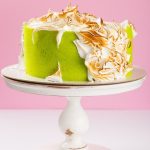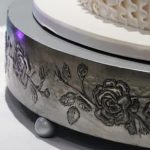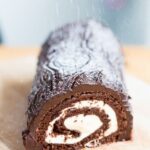Freezing a buttercream cake with delicate fondant decorations can be a source of dilemma for many bakers and cake enthusiasts. The desire to make ahead and preserve a beautifully decorated cake clashes with concerns of potential damage to the frosting and decorations during freezing. In this article, we will delve into the intricacies of freezing buttercream cakes with fondant decorations, exploring the challenges, benefits, and best practices involved.
Before we delve into whether it is possible to freeze a buttercream cake with fondant decorations, it is essential to understand the characteristics and composition of buttercream itself. Buttercream is one of the most popular cake frostings due to its smooth texture and ability to incorporate various flavors. We will take an in-depth look at buttercream’s ingredients and how they contribute to its taste, texture, and stability.
Fondant has become synonymous with elegant cake designs. This versatile material allows bakers to create intricate decorations that give cakes a polished and professional appearance. We will examine what exactly fondant is made of, its properties, and why it has become such a favored choice for cake decorators worldwide.
The quest for perfectly preserved cakes often leads us to the freezer. However, understanding the science behind freezing cakes is crucial before attempting to freeze any creation. We will explore how freezing affects different components of a cake and discuss the strategies used by professional bakers to mitigate potential issues that arise during freezing.
Join us as we navigate through the world of freezing cakes and uncover whether or not you can successfully freeze a buttercream cake with delicate fondant decorations. We will analyze the potential challenges involved in freezing these kinds of cakes while considering any issues that may arise from doing so. By delving into both pros and cons, we aim to equip you with knowledge that will help you make an informed decision about preserving your masterpiece in frozen time.
What is buttercream?
Buttercream is a popular and versatile frosting that is commonly used to decorate cakes. It is made by combining butter, sugar, and milk or cream to create a smooth and creamy texture. The amount of butter used in the recipe can vary, which results in different consistencies and flavors of buttercream.
One of the key characteristics of buttercream is its ability to hold its shape when piped or spread onto a cake. This makes it ideal for creating different decorative designs and textures on cakes. Buttercream can be tinted with food coloring to achieve various shades, making it a great choice for customizing cakes for special occasions.
The composition of buttercream plays a significant role in its taste and texture. The ratio of butter to sugar affects the sweetness and richness of the frosting. Additionally, adding milk or cream helps to thin out the mixture and make it easier to work with. Depending on personal preference, other flavorings such as vanilla extract or cocoa powder can also be added to enhance the taste of the buttercream.
| Characteristic | Description |
|---|---|
| Holds Shape | Buttercream has the ability to hold its shape when piped or spread onto a cake. |
| Customizable | Buttercream can be easily tinted with food coloring to achieve various shades. |
| Sweetness & Richness | The ratio of butter to sugar affects the sweetness and richness of the frosting. |
| Versatile Flavorings | Other flavorings such as vanilla extract or cocoa powder can be added to enhance the taste of the buttercream. |
Fondant decorations
Fondant is a smooth and pliable icing that is commonly used to create intricate designs and decorations on cakes. It is made from a mixture of sugar, water or liquid flavoring, gelatin or agar, and sometimes corn syrup. Fondant has gained popularity in the world of cake decorating due to its ability to be molded into various shapes and designs.
Characteristics of Fondant
One of the key characteristics of fondant is its versatility. It can be rolled out like dough and draped over cakes to create a smooth canvas for more intricate decorations. Fondant can also be shaped into three-dimensional objects such as flowers, animals, or figurines, making it an ideal choice for creating stunning cake designs.
Another important characteristic of fondant is its ability to provide a clean and polished finish to cakes. The smooth surface of fondant allows for sharp edges and clean lines that are often difficult to achieve with other types of frostings such as buttercream.
Working with Fondant
Working with fondant requires some practice and skill to achieve desirable results. It is important to knead the fondant well before using it, as this helps improve its elasticity and prevent cracking. Additionally, dusting the work surface with confectioners’ sugar or cornstarch can prevent sticking while rolling out the fondant.
To apply fondant decorations onto a buttercream cake, it’s crucial that the buttercream frosting underneath has been properly chilled and set before placing the fondant on top. This ensures that the weight of the fondant does not cause any damage or distortion to the cake.
Pros and Cons of Using Fondant Decorations on Buttercream Cakes
Using fondant decorations on buttercream cakes offers several advantages. Firstly, fondant provides a smooth and flawless finish, hiding any imperfections in the buttercream. This can be especially beneficial when creating intricate designs or covering a cake with multiple layers.
On the other hand, there are some drawbacks to using fondant decorations on buttercream cakes. One challenge is that fondant can sometimes become too heavy for the delicate structure of a buttercream cake, causing it to collapse or lose its shape. Additionally, fondant tends to dry out faster than buttercream, which may affect the overall taste and texture of the cake if not consumed within a certain timeframe.
Despite these challenges, many bakers and decorators successfully combine buttercream and fondant to create visually stunning cakes. The next section will delve into whether freezing a buttercream cake with fondant decorations is possible and what potential issues may arise.
Freezing basics
Freezing cakes is a common practice for many home bakers and professional cake decorators. However, it’s important to understand the science behind freezing and how it can impact the different components of a cake. By understanding the basics of freezing, you can make informed decisions when it comes to freezing a buttercream cake with fondant decorations.
When cakes are frozen, the water content in the cake batter turns into ice crystals. These ice crystals can cause damage to the structure of the cake, resulting in a dry and crumbly texture once thawed. Additionally, freezing can also affect the flavor of the cake as certain flavors may become diluted or altered during the freezing process.
Another component that is affected by freezing is buttercream frosting. Buttercream consists of fat, such as butter or shortening, and sugar. When frozen, these fats can become hardened and lose their creamy consistency. This can negatively impact both the taste and texture of your buttercream frosting.
Lastly, fondant decorations are particularly susceptible to moisture when exposed to freezing temperatures. Fondant has a high percentage of sugar which acts as a preservative but moisture from condensation during thawing can cause issues such as sagging or breaking decorations.
To minimize these potential issues when freezing a buttercream cake with fondant decorations, it’s important to properly protect and package your cake before placing it in the freezer. This will help maintain its shape, moisture level, and overall quality during the freezing process.
Can you freeze a buttercream cake?
Understanding the challenges of freezing buttercream cakes
Freezing a buttercream cake can be a tricky task, as it raises concerns about the texture and taste of both the buttercream frosting and any fondant decorations. Buttercream is known for its creamy and delicate consistency, while fondant is often used to create intricate designs that can easily become damaged or distorted during the freezing process. Therefore, it’s important to carefully consider the potential challenges and issues that may arise when attempting to freeze a buttercream cake.
Potential issues with freezing buttercream cakes
One of the main concerns when freezing a buttercream cake is the potential loss of moisture. Freezing can cause moisture to be drawn out from the cake, resulting in a dry and crumbly texture once thawed. This is especially true for buttercream, which already has a higher fat content compared to other frostings. The fats could potentially separate during the freezing process, leading to an undesirable consistency.
Additionally, another issue to consider is how well the fondant decorations will hold up in freezing temperatures. Fondant tends to become soft or sticky when exposed to moisture, so if not properly protected, it could lose its shape or even melt away entirely. This poses a risk for intricate or delicate fondant designs that require meticulous craftsmanship.
Strategies for mitigating potential issues
To mitigate these potential issues when freezing a buttercream cake with fondant decorations, there are several strategies you can follow. First and foremost, ensure that your cake is well-covered before placing it in the freezer. Wrap it tightly with plastic wrap or place it in an airtight container to prevent excessive moisture loss.
Another strategy is to freeze the cake without applying any fondant decorations beforehand. Instead, focus on adding those delicate accents once the cake has fully thawed. This way, you can preserve the integrity of your fondant designs and ensure they are as visually stunning as intended.
By being aware of the potential challenges and implementing proper precautions, it is possible to successfully freeze a buttercream cake with fondant decorations. However, it’s important to consider each specific cake’s unique characteristics and consult with an expert if you have any doubts or concerns.
Freezing buttercream cake with fondant decorations
Freezing a buttercream cake with fondant decorations can be a tricky decision for many bakers and cake decorators. On one hand, freezing can help extend the shelf life of the cake and make it easier to prepare ahead of time.
However, there are also concerns about how well the delicate fondant decorations will hold up during the freezing and thawing process. In this section, we will explore the pros and cons of freezing a buttercream cake with fondant accents to help you make an informed decision.
One of the main advantages of freezing a buttercream cake with fondant decorations is that it allows you to prepare ahead of time. This can be especially helpful if you have a busy schedule or if you are making a complex design that requires multiple layers and intricate fondant work. Freezing the cake allows you to spread out your preparation over several days or even weeks, giving you more flexibility in your schedule.
Another benefit is that freezing can actually improve the moisture and flavor of certain types of cakes. When a cake is frozen, the moisture in the batter converts into ice crystals which helps lock in moisture. As a result, when the cake is thawed, it retains its moistness better than if it had not been frozen. This can be particularly useful for buttercream cakes as they tend to dry out more quickly than other types of frostings.
However, there are also potential drawbacks to consider when freezing a buttercream cake with fondant decorations. One concern is that condensation may form on the fondant when the cake is thawed, causing it to become sticky or lose its shape. Additionally, depending on how delicate or intricate your fondant decorations are, they may become damaged or distorted during the freezing process.
Preparing the cake for freezing
Freezing a buttercream cake with fondant decorations requires careful preparation to ensure that the cake maintains its taste, texture, and visual appeal. Follow these step-by-step instructions to properly protect and package your buttercream cake with fondant decorations for freezing:
- Allow the cake to cool completely: Before attempting to freeze the cake, make sure it has cooled completely. This helps prevent moisture accumulation during the freezing process, which could lead to sogginess.
- Trim any excess frosting: If your buttercream cake has a thick layer of frosting, consider trimming it down slightly before freezing. This will help prevent smudging or damage to the delicate fondant decorations when packaging and thawing.
- Wrap the entire cake in plastic wrap: To protect the cake from freezer burn and moisture loss, tightly wrap it in several layers of plastic wrap. Make sure there are no gaps or exposed areas.
- Add an additional layer of protection: Once wrapped in plastic wrap, place the cake in a resealable plastic bag or an airtight container. This provides an extra barrier against freezer odors and helps maintain the freshness of both the buttercream and fondant.
- Label and date the packaging: Before placing the cake in the freezer, label the packaging with the date it was frozen. This is especially important if you plan on storing it for an extended period.
- Place in a flat area of the freezer: Find a flat surface in your freezer where the cake can be stored without being disturbed or subjected to pressure from other items.
- Avoid stacking other items on top: To prevent damage to delicate fondant decorations, avoid stacking heavy items on top of or around your frozen buttercream cake.
By following these steps, you can ensure that your buttercream cake with fondant decorations is properly protected and packaged for freezing. This will help preserve its flavor, texture, and visual appeal until you are ready to serve it.
Thawing and serving frozen buttercream cakes
Once you have successfully frozen a buttercream cake with fondant decorations, it’s important to know the best practices for thawing and serving the cake to ensure optimal texture and taste. Improper thawing can result in a soggy or dry cake, as well as potentially damaging the delicate fondant decorations. Follow these guidelines to thaw and serve your frozen buttercream cake:
- Transfer the frozen cake to the refrigerator: Place the wrapped or boxed frozen cake in the refrigerator for gradual thawing. This slow process allows for even distribution of moisture, preventing any potential condensation from forming on the surface of the cake.
- Allow time for defrosting: The exact time it takes to defrost a buttercream cake will depend on its size and thickness. In general, it is recommended to allow 24 hours for a standard-sized cake to fully defrost in the refrigerator.
- Maintain proper temperature control: Avoid transferring the partially thawed cake in and out of different temperature environments, as that can cause moisture fluctuations which could ruin both texture and taste. Keep it refrigerated until you are ready to serve.
- Avoid direct sunlight or heat sources: When thawing your buttercream cake, make sure it is kept away from direct sunlight or any sources of heat such as radiators or ovens. Heat can lead to uneven thawing, resulting in an uneven texture.
- Assess texture before serving: Before serving your thawed buttercream cake, check its texture by gently touching its surface with your fingertip. It should spring back slightly without leaving an indentation. If it feels too firm or soft, give it some more time to thaw properly.
By following these best practices for defrosting your frozen buttercream cakes, you can ensure that they retain their original flavor and texture. Promptly serve the thawed cake after it has reached room temperature to enjoy its full potential.
Tips and tricks for successfully freezing a buttercream cake with fondant decorations
Freezing a buttercream cake with delicate fondant decorations can be a daunting task, but with the right techniques and tips, it is possible to preserve the beauty and taste of the cake. Here are some expert advice and insider secrets to ensure a stunning cake even after freezing.
Firstly, it is essential to properly prepare the cake before freezing. This includes making sure that the buttercream layer is fully set and stabilized before adding the fondant decorations. This will prevent any undesirable movement or shifting of the decorations during freezing and thawing. Additionally, using a crusted buttercream recipe instead of a soft one can provide better durability to withstand freezing.
When placing the cake in the freezer, it is crucial to protect it from moisture and air exposure. Wrap the entire cake tightly with plastic wrap, ensuring no part is left exposed. It is also recommended to place it in an airtight container or wrap it again with aluminum foil for extra protection. This will prevent freezer burn and keep the cake fresh during its time in storage.
Another important tip is to freeze the cake without any additional decorative elements such as ribbons or flowers. These additions can easily become damaged or discolored during freezing and thawing. Instead, add these embellishments right before serving or defrosting the cake to ensure they remain intact and beautiful.
When it comes to thawing frozen buttercream cakes with fondant decorations, patience is key. Remove the wrapped cake from the freezer and allow it to thaw slowly in the refrigerator for 24-48 hours. This gradual thawing process will help retain moisture in both the buttercream and fondant layers, preventing any potential damage caused by rapid temperature changes.
Conclusion
In conclusion, it is possible to successfully freeze a buttercream cake with fondant decorations, but there are certain precautions that need to be taken. Freezing a buttercream cake can help extend its shelf life and allow for advanced preparation, which can be especially helpful for busy bakers or individuals planning events.
However, freezing a cake with fondant decorations presents some unique challenges. Fondant is a delicate material that can be prone to cracking or becoming brittle when exposed to extreme temperature changes. To prevent this from happening, it is crucial to properly protect and package the cake before freezing.
One important step in preparing the cake for freezing is to ensure that the fondant decorations are thoroughly dry and set before freezing. This will help prevent any smudging or misshaping of the decorations during the freezing process. Additionally, it is advisable to wrap the cake tightly in plastic wrap or place it in an airtight container before placing it in the freezer.
When it comes time to thaw and serve the frozen buttercream cake, it is important to follow best practices to preserve its texture and taste. The cake should be allowed to thaw gradually in the refrigerator, which will help maintain its moisture. Avoid using a microwave or hot water as these methods can cause uneven thawing and compromise the quality of the cake.
Frequently Asked Questions
How do you store a buttercream cake with fondant decorations?
When it comes to storing a buttercream cake with fondant decorations, it is essential to follow a few steps to ensure the best results. Firstly, it is important to make sure the cake has completely cooled down before attempting any storage. Once cool, loosely cover the cake with plastic wrap or place it in a cake carrier with a secure lid, taking care not to touch or smudge the fondant decorations.
Refrigeration is generally not recommended as it can cause condensation, which may affect the appearance and texture of the fondant. Instead, store the cake at room temperature in a cool and dry area away from direct sunlight.
How do you freeze a fully decorated fondant cake?
Freezing a fully decorated fondant cake requires special attention to maintain its quality and aesthetics. To begin freezing, ensure that the cake has been properly assembled and decorated without any imperfections or fragile elements that might not survive freezing and thawing. If there are any open spaces in the freezer large enough for the cake’s dimensions, carefully place your cake inside uncovered for about an hour until the exterior hardens slightly.
This will help prevent smudging during wrapping. Next, wrap the frozen cake securely in multiple layers of plastic wrap, ensuring that all surfaces are covered tightly without causing any damage to decorations. Finally, place your wrapped cake in a sturdy freezer bag or an airtight container before returning it to the freezer for long-term storage.
Can I freeze fondant decorations?
Fondant decorations can indeed be frozen if necessary; however, there are some considerations to keep in mind. It is crucial to take into account that freezing may alter their texture and appearance slightly upon thawing due to moisture absorption and condensation forming on their surface during defrosting. Before freezing your fondant decorations, allow them sufficient time to dry completely at room temperature so they retain their shape and firmness during freezing and thawing processes better.
Once dry, individually wrap each decoration with plastic wrap or place them in an airtight container, ensuring they are protected against any potential damage. When it’s time to use the frozen decorations, allow them to thaw completely at room temperature before carefully placing them onto your cake to avoid any cracking or distortion.

Welcome to my blog about home and family. This blog is a place where I will share my thoughts, ideas, and experiences related to these important topics. I am a stay-at-home mom with two young children. I hope you enjoy reading it! and may find some helpful tips and ideas that will make your home and family life even better!





